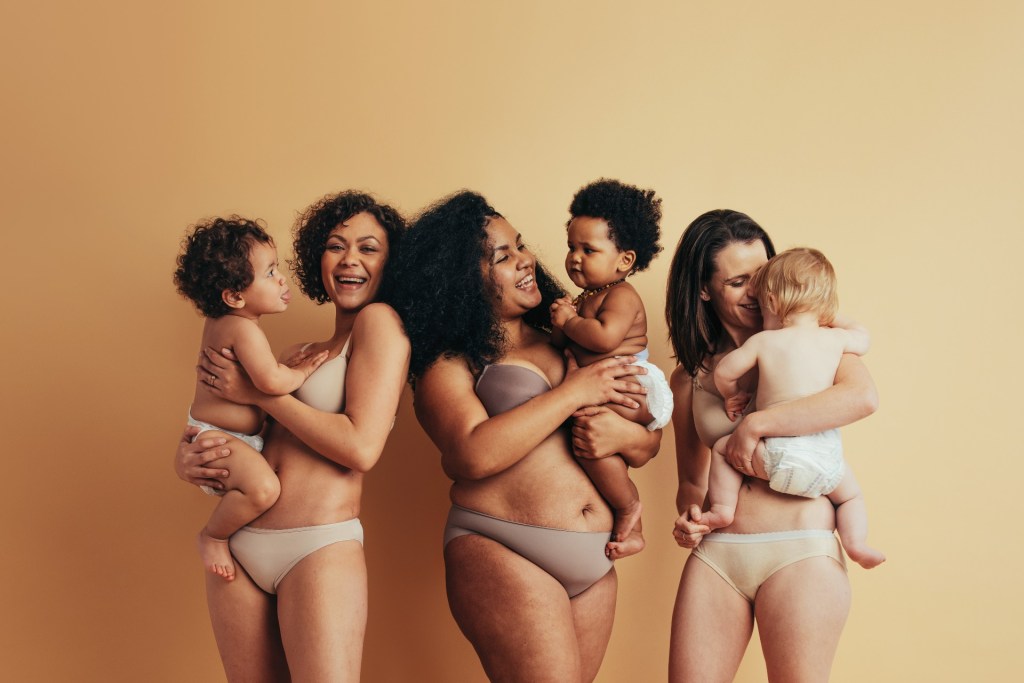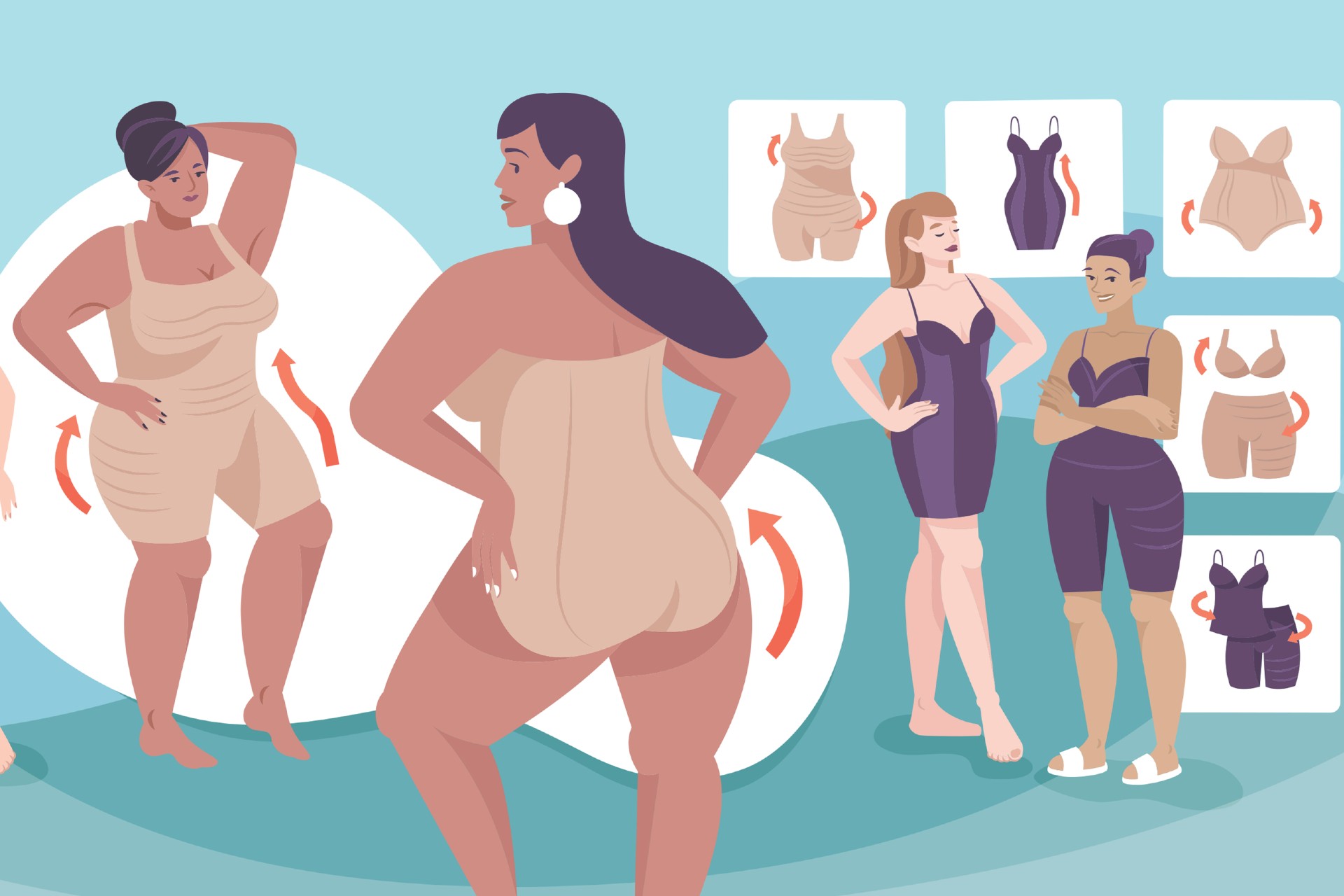Feeling beautiful in the postpartum stage of pregnancy is a hard thing to identify with sometimes. And as any seasoned mother will tell you, carrying a baby to term is tough stuff. It often requires moms to give of themselves in big ways to bring new life into the world. But after all the newborn excitement wears off, reality sets in — and that’s usually when new moms sometimes feel unhappy about themselves.
To combat those feelings of inadequacy or frustration, we’d like to highlight a great, lower-cost, and more practical approach to managing postpartum baby weight. By utilizing the fantastic and varying sizes and styles of postpartum shapewear, new moms can still feel fit and attractive to themselves and their significant others without having to immediately jump into an unhealthy exercise routine or painful surgery after they so recently experienced the miracle of birth. In this post, we will discuss in greater detail:
- Types/styles of postpartum shapewear
- The benefits of each style
- Why or why not women choose to wear shapewear
- How to choose the right fit

Postpartum shapewear styles and their benefits
As with most items on the market today, not all shapewear is considered equal in terms of its quality or effectiveness in reducing the look of recent pregnancy/weight gain. Some of the issues surrounding postpartum shapewear involve bad cuts of material, the incorrect style for your body type, cheap fabrics, and slippage.
While there are many different types of shapewear in general, not every style will be appropriate or comfortable for you to wear not so long after giving birth. We break down each style and their perks:
- Waist trainers/wraps/bands: These simple and straightforward options are easy for any new mom to try out. Simply wrap the band around your belly, being careful to not pull too tightly, and voilà! The simple design makes them easy for newbies on their postpartum journey.
- High-waisted shape shorts: Equally as simple as the waist trainer bands, shape shorts are easy as pie to use and wear. Simply pull them on to instantly tuck away extra skin or loose areas you may be unhappy with for a more put-together aesthetic. The no-nonsense approach to easy-to-use shapewear is what makes this an ideal purchase for a momma who has very recently had a baby and needs the least amount of steps as possible.
- Tank tops: The tank top version of shapewear is likely the most effective option in terms of slimming the wearer with minimal effort while also integrating a convenient snap-on/off set of straps that’s perfect for quick access to nurse your baby while wearing one. These are often the most forgiving — fabric speaking, that is.
- Full bodysuit: This option is the most tedious and time-consuming choice for shapewear shoppers in their postpartum phase of pregnancy. Though supportive and comfortable, full-bodysuit shapewear would be better suited for a mother who is farther along in her postpartum journey that requires no breastfeeding or frequent trips to the restroom.

To wear shapewear or to not, that is the question
To some new moms, the idea of having to wrap a tightly fitted piece of clothing around their belly after the stress and trauma of childbirth is simply torturous. And to others, having something compressed against their healing wombs helps provide them with comfort and support ––additionally, it is also suggested that use of shapewear after childbirth can speed up the recovery process and shorten the length of time it takes for a mother’s body to heal.
The reasoning behind why some women choose to use shapewear in their postpartum journey is nothing more than personal preference. Where certain moms will see the benefits, others will see negatives or downfalls. Some OB-GYNs encourage the use of shapewear or belly bands postpartum to their patients, while others do not. Each new mom — and her particular situation — is different, and each woman has different ideas of what is important to her, tolerances for discomfort, or plans for life postpartum.
Fits like a glove
Much like the perfect bra or pair of panties, perfect shapewear for postpartum women usually comes down to the cut and fit. If you are attempting to select a style of shapewear — other than belly bands, that is — then it would likely be beneficial for you to be properly measured and fitted in a department store or maternity store. Each brand, style, and cut will fit each person differently, depending on body type. This makes a trip to the person holding the tape measure a beneficial one. By doing so, you are receiving the most accurate fit based off numbers versus a guesstimate on size.
The important thing to keep in mind here is that the numbers on the tape measure do not define you as a mom. Whatever size you need or style of shapewear fits you best is perfect just for you. Bodies change, adapt, and grow to nurture babies for nine months. This takes time and patience from both mom and baby. The same thing goes for moms after birth. Bodies that grew babies for nine months need adequate time to heal and recover, and that process is a slow one, as well. If you don’t think shapewear is for you, that’s okay! Being comfortable in your own skin is the most important thing.



